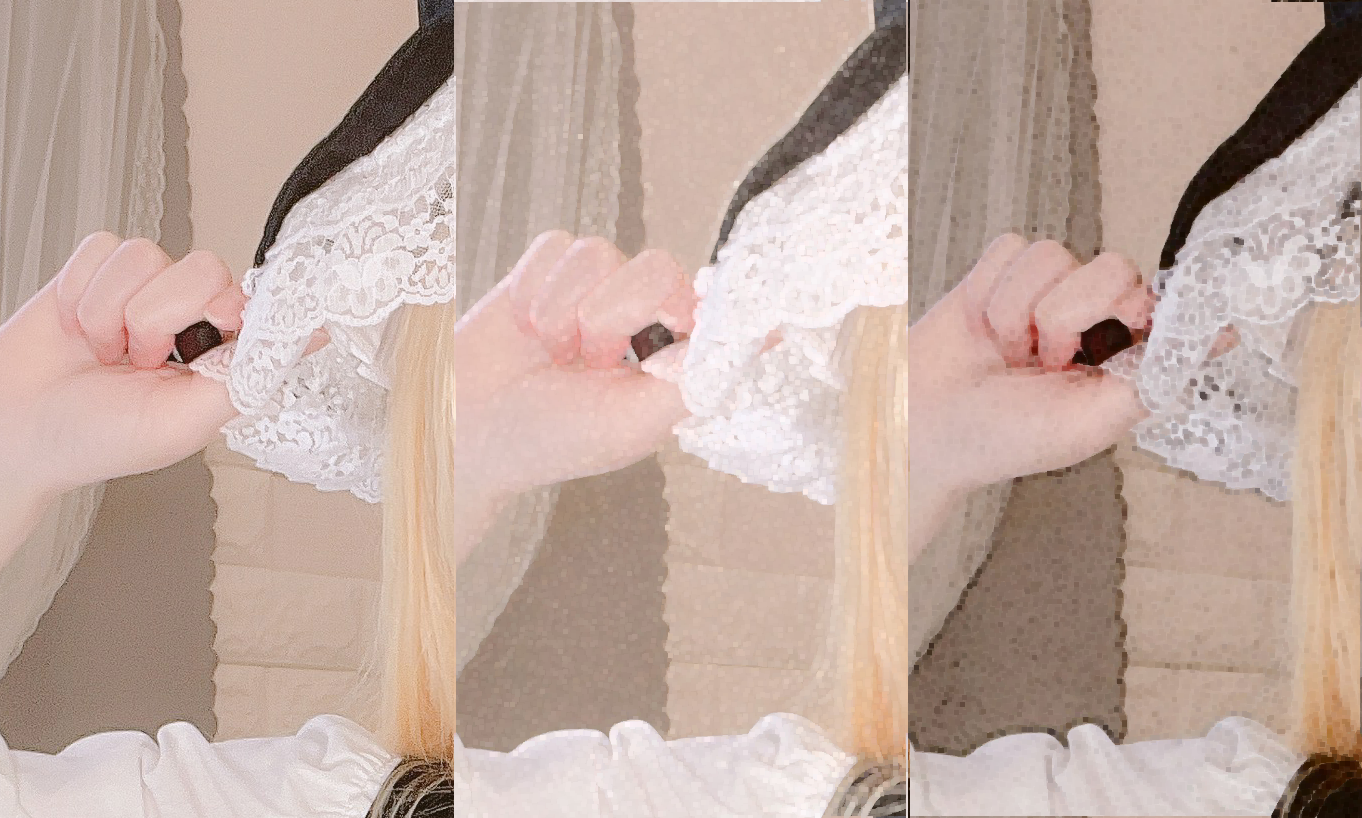Stencil(⌺) is the famous operator adopted in Dyalog
APL that enables writing image processing code in a convenient way.
An example would be dilation.
dilation←{⌈/{,⍵}⌺(1+2×⍺ ⍺)⊢⍵} ⍝ ⍺ is the radiusThe interpreter of Dyalog has a few special code that avoids consing caused by interpreting the left operand multiple times, if it is in one of the following forms:
{⍵} {⊢⍵} {,⍵} {⊂⍵}
{+/,⍵} {∧/,⍵} {∨/,⍵} {=/,⍵} {≠/,⍵}
{ +/,A×⍵} { +/⍪A×⍤2⊢⍵}
{C<+/,A×⍵} {C<+/⍪A×⍤2⊢⍵}Apparently, {⌈/,⍵} is not in it so that is the
reason the above APL function would be implemented that way.
With Co-dfns, APL code is compiled to C++ code before execution so the overhead from parsing the dfns content each time applying the function should never be worried. However, current version of Co-dfns does not support using stencil operator directly yet.
{⌈⌿⌈⌿¯2 ¯1 0 1 2⌽⍤0 3⊢¯2 ¯1 0 1 2⊖⍤0 2⊢⍵}
This is similar to dilation but
with radius fixed to 2, and the image
is treated as a torus instead of clipping at edge.

⌈, with
erosion ⌊.Actually, even without been compiled this version is a bit
faster than the one uses stencil, which exceeded my expectation.
The compiled version with CPU backend is much slower, apparently
the plain C++ code lacks the magical optimization done by Dyalog
interpreter. (Did I mentioned foreign function call cost?) I don't
have GPU so if someone is able to test please help. The benchmark
is tested on randomized array of shape 1500
1500.
co-dfns cpu → 9.9E¯1 | 0% ⎕⎕⎕⎕⎕⎕⎕⎕⎕⎕⎕⎕⎕⎕⎕⎕⎕⎕⎕⎕⎕⎕⎕⎕⎕⎕⎕⎕⎕⎕⎕⎕⎕⎕⎕⎕⎕⎕⎕⎕
interpreted → 5.1E¯2 | -95% ⎕⎕
* stencil → 7.9E¯2 | -92% ⎕⎕⎕Bibliography
[dilation] Dilation (morphology). Wikipedia. https://en.wikipedia.org/wiki/Dilation_(morphology).
[Hui20] Towards Improvements to Stencil. . https://www.dyalog.com/blog/2020/06/towards-improvements-to-stencil/.